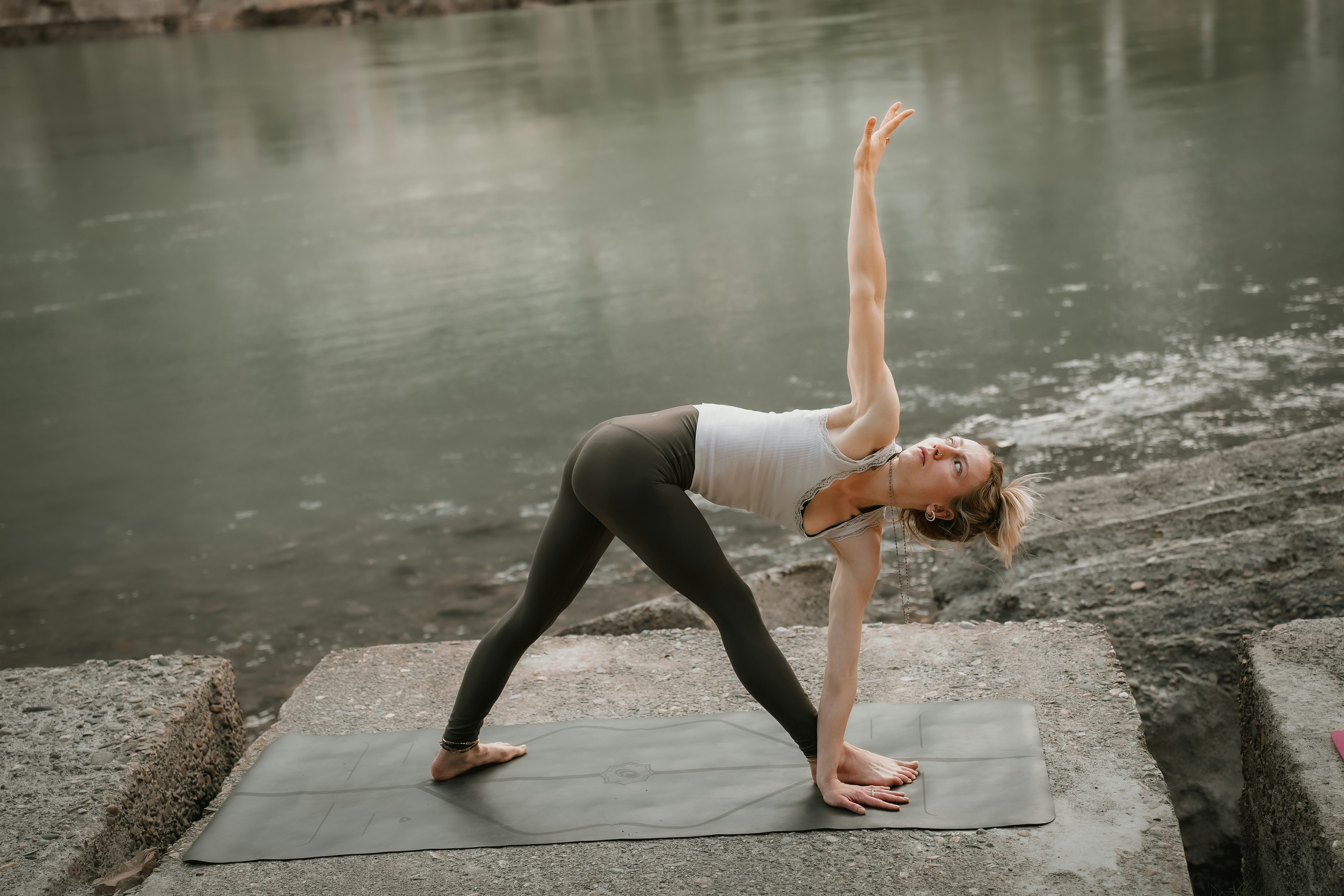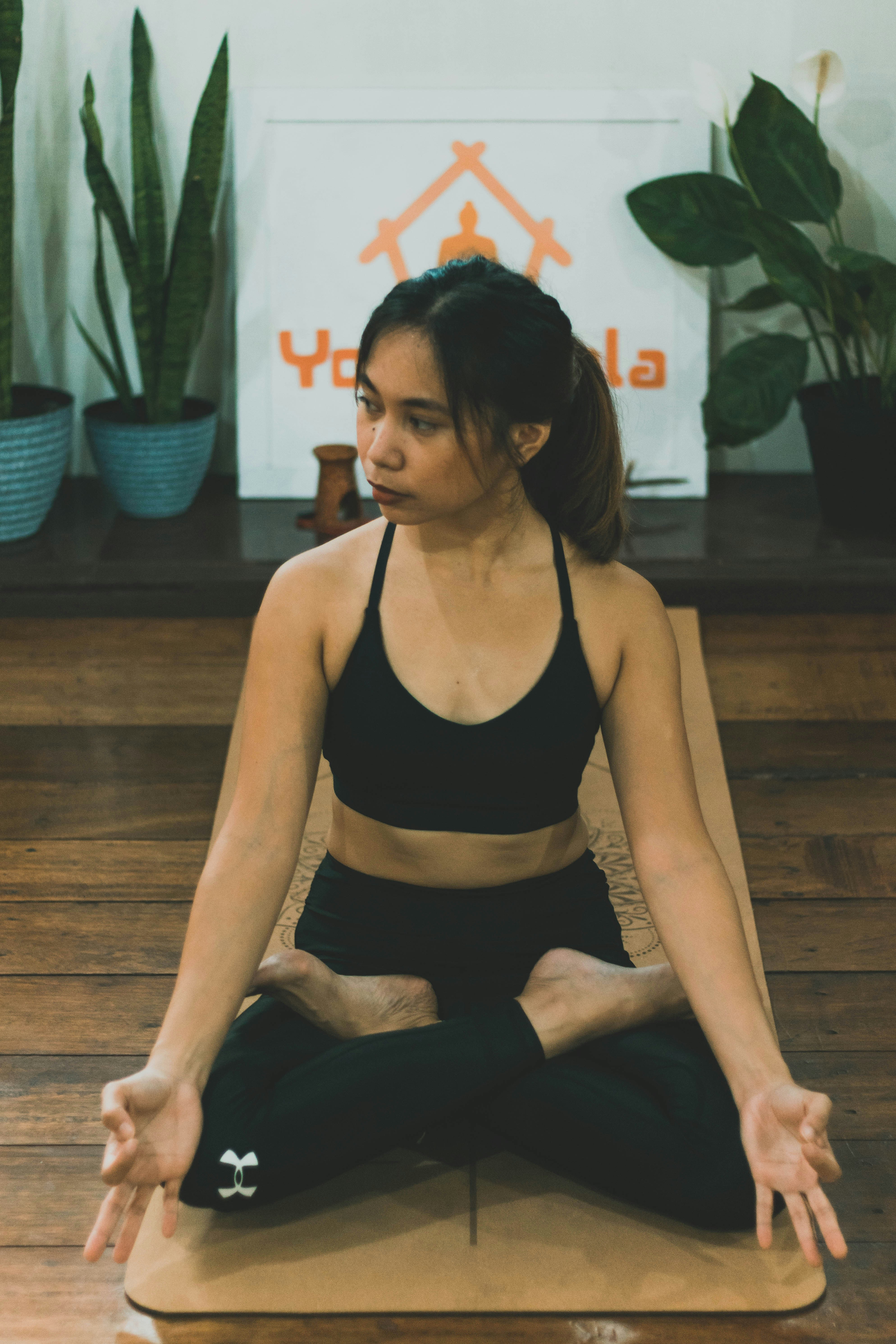Understanding the Benefits of Legs Up the Wall Pose
The Legs Up the Wall pose, known as Viparita Karani, is a restorative yoga position that offers numerous advantages for both the body and mind. Its primary physical benefits include improved circulation and reduced strain on the legs. When practitioners elevate their legs against a wall, it allows blood to flow more freely back to the heart, facilitating better venous return. This can be particularly beneficial for those who spend extended periods on their feet or suffer from conditions such as swollen ankles and varicose veins.
Moreover, this pose provides a gentle stretch for the hamstrings and lower back, alleviating tension and discomfort. The calming nature of this position also contributes to significant stress relief. As practitioners adopt the pose, they are encouraged to focus on their breath, promoting a deep sense of relaxation that can combat the mental fatigue associated with daily stressors.
Beyond physical improvements, the Legs Up the Wall pose serves as an effective tool to enhance emotional well-being. By encouraging mindfulness and fostering introspection, this practice can assist in alleviating symptoms of anxiety and insomnia. Studies have indicated that incorporating restorative yoga techniques into one’s routine can lead to reductions in anxiety levels and improvement in sleep patterns, making this pose particularly valuable for individuals facing these challenges.
Accessibility is another compelling aspect of the Legs Up the Wall pose. It is suitable for practitioners of all skill levels, providing a safe and supportive environment to enjoy the benefits of yoga. Beginners can easily integrate it into their practice, while advanced individuals may use it as a complementary pose to support their overall well-being. This versatility makes Legs Up the Wall an indispensable addition to any yoga routine, promoting holistic health across physical, mental, and emotional dimensions.
Modifications for Inclusivity and Comfort
The Legs Up the Wall pose, known for its restorative benefits, can be adapted to accommodate practitioners of various abilities and comfort levels. Modifications play a central role in making this pose accessible for individuals with limited flexibility, back issues, or other physical impediments. By integrating props and making slight adjustment to body positions, anyone can experience the pose’s therapeutic advantages.
For those who may find it challenging to lie flat against the wall, a folded blanket or bolster can be placed under the hips. This elevation not only provides support but also allows for a deeper sense of relaxation. Individuals with tight hamstrings may also benefit from keeping their knees slightly bent, creating a more comfortable experience while still reaping the benefits of gentle inversion.
For practitioners dealing with back pain or discomfort, it can be helpful to also keep the lower back supported. Using a rolled-up towel or additional soft cushioning under the lumbar region can offer additional stability and promote ease during the pose. Allowing the arms to rest at the sides or on the stomach can further enhance comfort and facilitate relaxation.
Yoga practitioners can also adapt the Legs Up the Wall pose for various environments, whether at home, in yoga studios, or even outdoors. In studio settings, using wall space can be straightforward, while at home, practitioners can utilize sturdy furniture to achieve a similar position. Outdoor environments may require attention to uneven surfaces; practitioners can find stability by leveraging flat, stable areas or using a yoga mat for added grip and comfort.
Ultimately, these modifications affirm that the Legs Up the Wall pose is not exclusive to advanced practitioners, but rather a versatile tool for all individuals seeking emotional and physical relief through yoga. By prioritizing inclusivity and comfort, the restorative embrace of this pose can be enjoyed by everyone.
Contraindications to Consider
While the Legs Up the Wall pose, known as Viparita Karani, offers numerous benefits, it is essential for practitioners to be aware of certain contraindications that may necessitate avoiding this position. Individuals with specific medical conditions should approach this pose with caution or seek alternative practices. Those diagnosed with glaucoma should refrain from performing Legs Up the Wall, as the inversion may increase intraocular pressure, potentially exacerbating the condition.
Additionally, individuals who have recently undergone surgery, particularly abdominal or eye surgery, are advised against practicing this pose. The pressure on the body in a vertical position could hinder the healing process or lead to discomfort. Severe hypertension is another significant contraindication; the inversion can elevate blood pressure, posing risks to individuals with cardiovascular conditions. Consulting a qualified healthcare professional is crucial for those with hypertension before engaging in any inversion practices.
Pregnant individuals, particularly after the first trimester, should also avoid the Legs Up the Wall pose. The position may place undue stress on the lower back and pelvis, which can be uncomfortable during pregnancy. Furthermore, those with chronic lower back pain or certain spinal issues may want to consider modifications or alternative poses that do not require inversion.
In light of these considerations, it is strongly recommended for practitioners to engage with a healthcare or yoga professional to discuss their unique health situations prior to attempting the pose. Responsible practice of Yoga Legs Up the Wall, inclusive of awareness of these contraindications, fosters a safe and mindful approach to enhancing one’s yoga journey.
Incorporating Legs Up the Wall into Your Routine
Legs Up the Wall, also known as Viparita Karani, is a restorative yoga pose that provides numerous physical and mental benefits. To efficiently incorporate this pose into your regular yoga practice or daily routine, it is essential to be mindful of timing, duration, and breathing techniques.
To begin, aim to practice Legs Up the Wall at least two to three times a week. However, you may choose to do so more frequently, particularly after a long day of work or physical activity. Ideal times for this pose include mornings to energize your day or evenings to promote relaxation before bedtime. When setting aside time for this position, ensure you are in a quiet and comfortable environment to minimize distractions.
For optimal benefits, maintain the pose for a duration of 5 to 15 minutes. During this period, focus on your breathing; inhale deeply through your nose and exhale slowly through your mouth. This mindful breathing is crucial as it enhances relaxation and helps bring awareness to the body, enabling you to let go of tension and stress. To deepen the experience, consider practicing visualization techniques, such as imagining a peaceful scene or focusing on sensations in your legs and lower back.
Additionally, Legs Up the Wall can be seamlessly integrated with other yoga postures. For instance, practice gentle stretches such as Child’s Pose or Cat-Cow before transitioning into Legs Up the Wall to prepare your body. Posture sequences that combine restorative poses, like Forward Fold or Supine Bound Angle Pose, can enhance relaxation. You can also pair this posture with meditation or pranayama (breath control) techniques to create an all-encompassing routine that promotes holistic well-being.
Through consistent practice and mindful integration, Legs Up the Wall can become a beneficial element of your daily life, contributing to overall physical and mental health.
Reference
Image credit: https://www.yogaensalada.com/wp-content/uploads/2020/05/LEGS-UP-TO-WALL_1000px_wm-2-831×1024.jpg



Leave a Reply